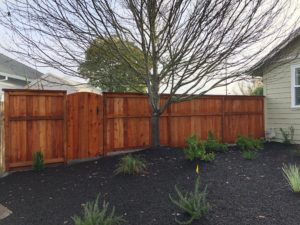This past winter we did our annual rounds of winter pruning. We visited the gardens of several clients whose landscaping we have installed.
 Although we do charge a nominal amount for our winter pruning service, our main motivation is to keep these gardens looking terrific so that we may bring prospective clients to visit these gardens to see examples of our work that has matured over the years.
Although we do charge a nominal amount for our winter pruning service, our main motivation is to keep these gardens looking terrific so that we may bring prospective clients to visit these gardens to see examples of our work that has matured over the years.
We typically begin in early December by pruning ornamental grasses. Almost all ornamental grasses get pruned hard, down to the ground. These grasses usually continue to clump outward, creating a huge plant, maybe larger than is attractive or that the homeowner likes. In this case, we will divide the grass after it has been cut, using a sharp straight spade or a pick. By reducing the size and width of the clump, we reduce the size and width of the plant when it grows back in the spring.
We then go through and look for dead branches on all plant material and remove them. We want the plant to put its energy to healthy and new growth rather than dead branches.
On our next visit through all the winter pruning gardens we look at all evergreen plants and prune them to shape, if necessary. Not all evergreens require pruning. Remember, our planting style includes making sure that the correct plant is installed in the correct place. If a plant grows too tall or too wide and requires pruning, then we have not installed the correct plant. Plants however, do not always grow uniformly, or take on the desired shape as originally planned. Some branches may grow at odd angles and at odd lengths. In this situation we prune to shape. Some plants grow leggy, and will benefit from pruning to encourage more growth in the interior so the plant looks thicker.
Perennials require a winter deadheading (in addition to the deadheading required throughout the year). Lavender, erigeron, penstemon, abutilon and salvia are the perennials we plant the most.
Deciduous plants usually require the most pruning, and we wait until the plant has dropped its leaves, typically in late December, to see the branching structure. Deciduous trees, and especially upright Japanese maples are pruned by thinning. Dead and crossing branches are the first to go, and then we use an artistic eye to open up the structure, allowing space for good airflow, and creating a desirable shape and form. Note that we never ‘top’ a tree. If a branch is to be cut, we cut the entire branch out, or else cut back to a desired lateral branchlet.
Hydrangeas get cut back to a new bud on all branches. Where there are several new buds emerging on a branch, select a bud to cut above according to how large or small we want the plant to be. Cutting above a lower bud will control the plant’s height – above a higher bud will yield a taller plant.
Roses are pruned hard, leaving three or four or five strong canes.
Although we at Details Landscape Art offer low maintenance garden design and installation, they are not NO maintenance yards. Winter pruning is an important element in keeping a garden fresh and beautiful over the long haul.
